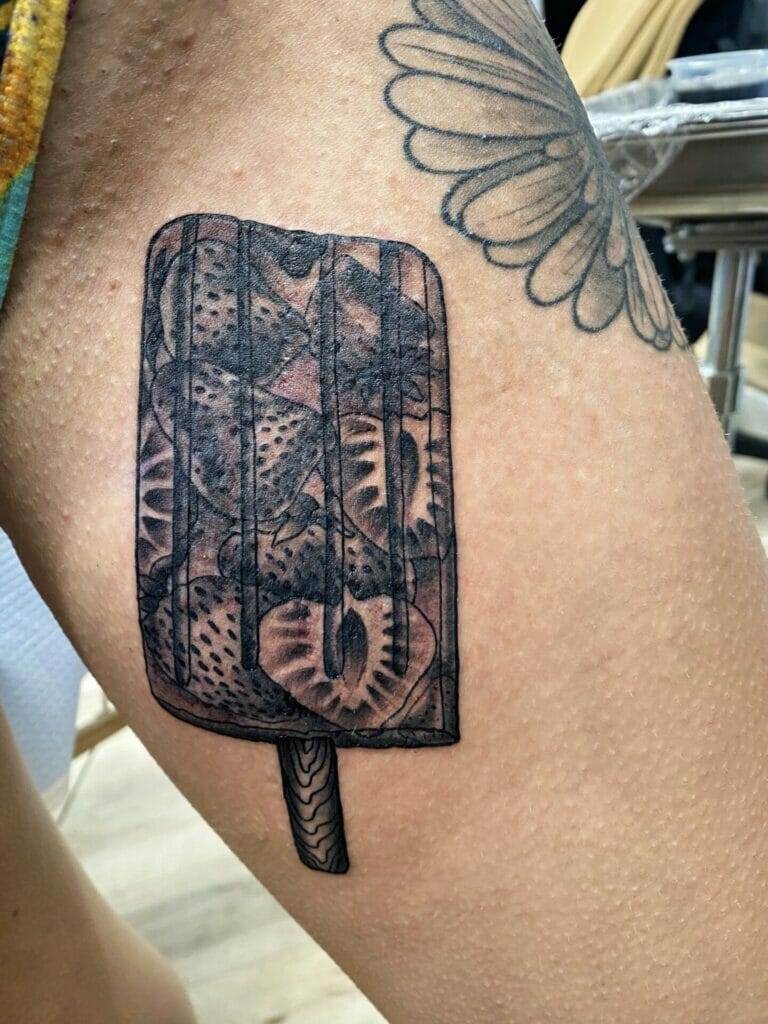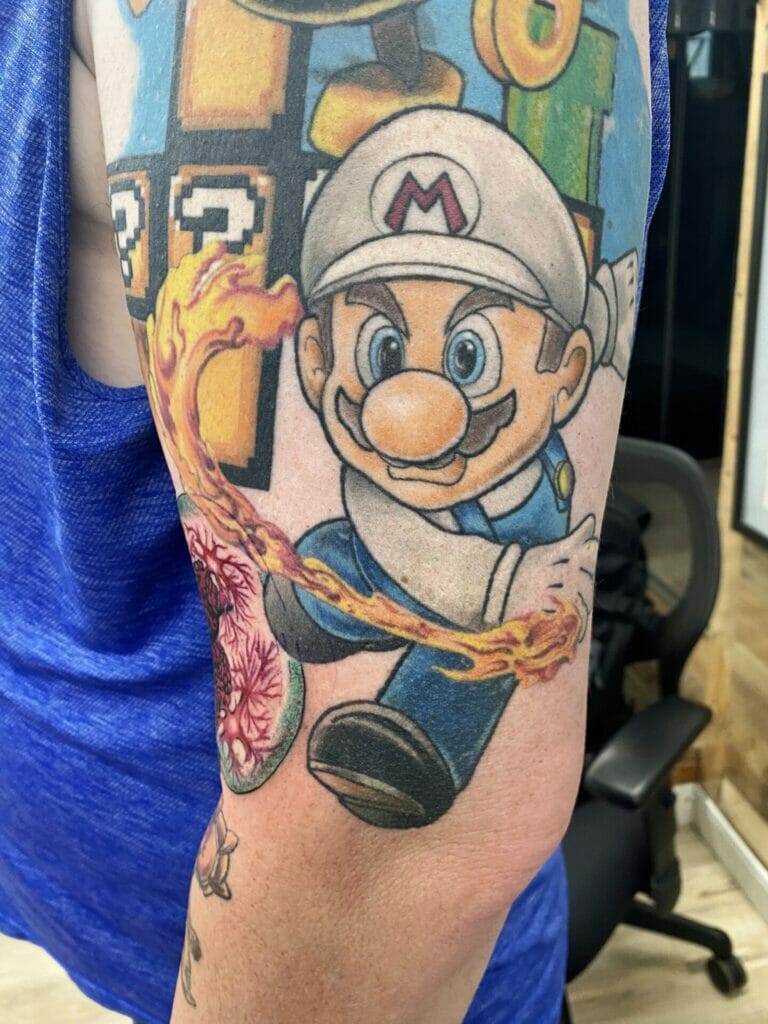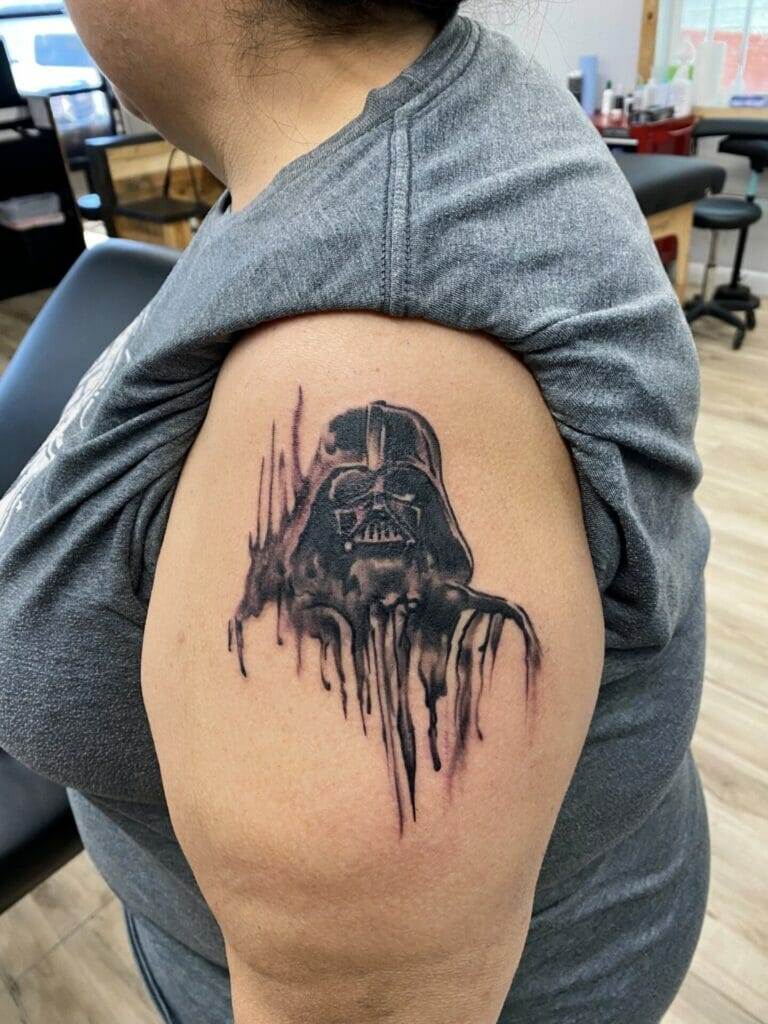Tattoos have been a part of human culture for thousands of years, serving as a form of personal expression, cultural identity, and even spiritual significance. The art of tattooing has evolved over time, with different techniques and styles emerging in various cultures around the world. In this blog post, we will explore the rich history of tattooing, the different styles of tattoo artistry, the importance of design and color, the tattooing process, the tools of the trade, aftercare tips, running a successful tattoo shop, and the future of tattoo artistry.
The purpose of this blog post is to provide readers with a comprehensive understanding of tattoo artistry. Whether you are a tattoo enthusiast, an aspiring tattoo artist, or simply curious about the world of tattoos, this post aims to educate and inspire. By delving into the history, styles, techniques, and business aspects of tattooing, we hope to shed light on the enduring beauty and power of this ancient art form.
The History of Tattooing: From Ancient Times to Modern Day
Tattooing has a long and fascinating history that spans across different cultures and time periods. The origins of tattooing can be traced back to ancient civilizations such as Egypt, Greece, Rome, China, and Japan. In these cultures, tattoos were often used as symbols of status, protection, or religious devotion.
In ancient Egypt, for example, tattoos were seen as a form of protection against evil spirits and were commonly found on women’s bodies. In ancient Greece and Rome, tattoos were used to mark slaves and criminals as a form of punishment or identification. In China and Japan, tattoos were associated with criminality but also served as a form of spiritual protection.
Over time, tattooing techniques and styles evolved. In Polynesia, for instance, traditional tattooing methods involved using sharp bone or shell tools to manually puncture the skin and insert ink. This technique, known as “tatau,” is still practiced today in some Polynesian cultures.
In the modern era, tattooing has become a mainstream form of art and self-expression. With advancements in technology and the rise of tattoo culture, artists have been able to push the boundaries of what is possible in tattoo design and technique. Today, tattoos are seen as a form of personal expression, with individuals choosing designs that hold deep meaning or simply reflect their personal style.
The Different Styles of Tattoo Artistry: Traditional, Realism, Neo-Traditional, and More
Tattoo artistry encompasses a wide range of styles, each with its own unique characteristics and aesthetic appeal. Some of the most popular tattoo styles include traditional, realism, neo-traditional, blackwork, watercolor, and geometric.
Traditional tattoos, also known as old school tattoos, are characterized by bold outlines, limited color palettes, and iconic imagery such as anchors, roses, and skulls. These tattoos often have a vintage feel and are inspired by the traditional American tattooing style popularized by artists like Sailor Jerry.
Realism tattoos aim to replicate the appearance of real-life objects or portraits with incredible detail and precision. These tattoos require a high level of skill and expertise to achieve a lifelike effect. Realism tattoos can be done in black and gray or full color.
neo-traditional tattoos combine elements of traditional tattooing with more modern techniques and imagery. These tattoos often feature bold outlines, vibrant colors, and a mix of traditional and contemporary subject matter. Neo-traditional tattoos are known for their intricate details and stylized designs.
Blackwork tattoos are characterized by solid black ink or large areas of black shading. These tattoos often feature geometric patterns or abstract designs. Blackwork tattoos can be bold and graphic or more subtle and intricate.
Watercolor tattoos mimic the appearance of watercolor paintings, with soft edges, vibrant colors, and a fluid, painterly style. These tattoos often feature abstract or nature-inspired designs and require a skilled artist who can create the illusion of watercolor on the skin.
Geometric tattoos are composed of geometric shapes and patterns, such as triangles, circles, and lines. These tattoos can be simple or complex, and often have a clean and minimalist aesthetic. Geometric tattoos can be done in black and gray or full color.
The Importance of Design: Creating Unique and Personalized Tattoos
Design is a crucial aspect of tattoo artistry, as it allows artists to create unique and personalized tattoos that reflect the individuality and preferences of their clients. A well-designed tattoo should not only look visually appealing but also hold deep meaning for the person wearing it.
When working with clients to create a custom design, it is important for tattoo artists to listen carefully to their ideas, preferences, and stories. Understanding the client’s vision and personal connection to the tattoo will help the artist create a design that truly resonates with them.
Researching and gathering visual references is an essential part of the design process. By studying different styles, motifs, and techniques, artists can draw inspiration and incorporate elements that align with the client’s vision. This research also helps artists stay up-to-date with current trends and techniques in tattoo artistry.
Once the initial design concept is established, artists can begin sketching and refining the design. This may involve multiple iterations and feedback from the client to ensure that the final design meets their expectations. Collaboration between the artist and client is key to creating a tattoo that both parties are proud of.
The Role of Color: Choosing the Right Shades and Hues for Your Tattoo
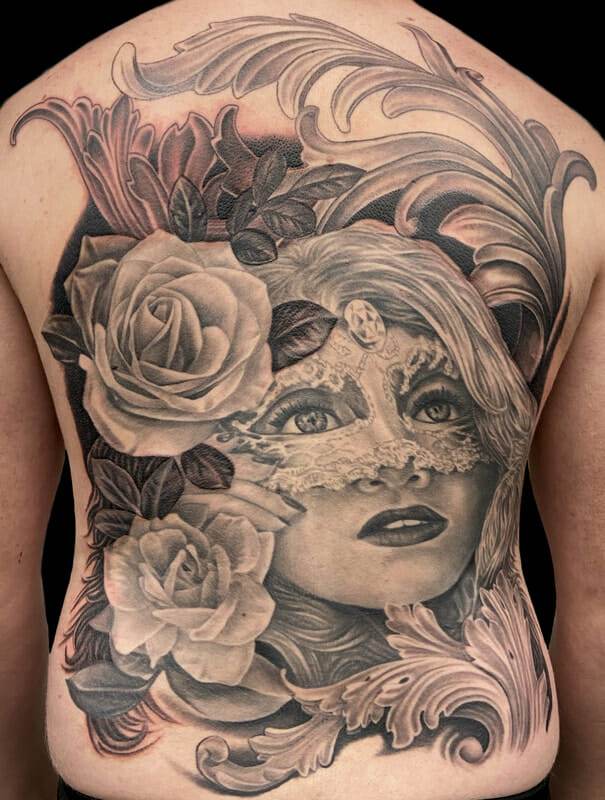
Color plays a significant role in tattoo artistry, as it can enhance the overall aesthetic appeal of a design and evoke specific emotions or moods. When choosing colors for a tattoo, it is important to consider factors such as skin tone, design style, and personal preferences.
Skin tone is an important consideration when selecting colors for a tattoo. Certain colors may appear more vibrant or muted depending on the individual’s skin tone. For example, pastel colors may not show up as well on darker skin tones, while bold and saturated colors can pop on lighter skin tones.
Design style also influences color choices. Traditional tattoos often feature a limited color palette of bold, primary colors, while realism tattoos may require a wider range of colors to achieve a lifelike effect. Watercolor tattoos rely heavily on vibrant and translucent colors to mimic the appearance of watercolor paintings.
Personal preferences should also be taken into account when choosing colors for a tattoo. Some individuals may prefer bright and vibrant colors, while others may prefer a more muted or monochromatic color scheme. It is important for artists to have open and honest conversations with their clients to understand their color preferences and ensure that the final design meets their expectations.
The Tattooing Process: From Sketch to Skin
The tattooing process involves several steps, from the initial sketch to the final application of ink on the skin. Each step requires careful attention to detail and proper technique to ensure a successful and visually appealing tattoo.
The first step in the tattooing process is the consultation with the client. During this stage, the artist discusses the client’s design ideas, preferences, and any specific requirements or concerns. The artist may also take measurements or photographs of the area where the tattoo will be placed to ensure proper placement and sizing.
Once the design is finalized, the artist creates a stencil or transfer of the design onto transfer paper. This stencil is then applied to the client’s skin using a transfer solution or deodorant stick. The artist carefully positions and adjusts the stencil to ensure proper placement and alignment with the client’s body.
After the stencil is applied, the artist begins the tattooing process. This involves setting up the tattoo machine, selecting the appropriate needle configuration, and preparing the ink. The artist then begins tattooing, following the lines of the stencil and gradually filling in the design with color or shading.
Throughout the tattooing process, it is important for the artist to maintain proper hygiene and cleanliness. This includes wearing gloves, using sterile equipment, and properly disposing of used needles and ink caps. The artist should also regularly clean and disinfect the work area to prevent the spread of bacteria or infection.
Once the tattoo is complete, the artist cleans the area with antiseptic solution and applies a thin layer of ointment or petroleum jelly to protect the tattoo and promote healing. The client is then given aftercare instructions to ensure proper healing and maintenance of the tattoo.
The Tools of the Trade: Understanding Tattoo Machines and Needles
Tattoo machines and needles are essential tools for tattoo artists, as they determine the quality and precision of the tattooing process. Understanding different types of machines and needles is crucial for selecting the right equipment for a tattoo shop.
Tattoo machines, also known as tattoo guns or tattoo pens, are handheld devices that use electromagnetic coils to move a needle up and down at a high frequency. This creates a puncture in the skin, allowing ink to be deposited into the dermis. There are two main types of tattoo machines: coil machines and rotary machines.
Coil machines are the traditional type of tattoo machine and are still widely used today. They consist of electromagnetic coils that create a magnetic field when powered on. This magnetic field moves a metal armature bar up and down, which in turn moves the needle in and out of the skin.
Rotary machines, on the other hand, use a rotating motor to move the needle in a circular motion. These machines are quieter and vibrate less than coil machines, making them a popular choice for artists who prefer a smoother and quieter tattooing experience.
Tattoo needles come in various configurations and sizes, each designed for specific purposes and techniques. The most common types of tattoo needles include round liners, round shaders, magnum shaders, and flat shaders.
Round liners are used for creating fine lines and outlines, while round shaders are used for shading and coloring. Magnum shaders have multiple needles grouped together in a flat configuration, allowing for faster shading and coloring. Flat shaders have a single row of needles in a flat configuration, making them ideal for filling in large areas with solid color.
Choosing the right needles depends on the desired effect and technique. Artists should consider factors such as needle size, grouping configuration, and taper length when selecting needles for a specific tattoo.
The Art of tattoo aftercare: Tips for Keeping Your Tattoo Vibrant and Healthy
Proper aftercare is essential for maintaining the vibrancy and health of a tattoo. Aftercare begins immediately after the tattoo is completed and continues until the tattoo is fully healed, which can take several weeks.
The first step in aftercare is to keep the tattoo clean and moisturized. The client should gently wash the tattoo with mild soap and warm water, using their clean hands or a soft cloth. It is important to avoid scrubbing or rubbing the tattoo, as this can cause irritation or damage to the healing skin.
After washing, the client should pat the tattoo dry with a clean towel or allow it to air dry. Once dry, a thin layer of ointment or petroleum jelly should be applied to keep the tattoo moisturized. This helps prevent scabbing and promotes proper healing.
During the healing process, it is important to avoid exposing the tattoo to excessive moisture or sunlight. The client should avoid swimming, saunas, hot tubs, or any activities that may cause excessive sweating. It is also important to protect the tattoo from direct sunlight by wearing loose clothing or applying sunscreen with a high SPF.
The client should also avoid picking, scratching, or peeling the tattoo, as this can cause scarring or color loss. It is normal for the tattoo to scab and peel during the healing process, but it is important to let the skin naturally shed without interfering.
Regularly moisturizing the tattoo and keeping it clean will help prevent dryness and itching. If any signs of infection, such as excessive redness, swelling, or pus, occur, the client should seek medical attention immediately.
The Business of Tattooing: Running a Successful Tattoo Shop
Running a successful tattoo shop involves more than just artistic talent. It requires strong business acumen, effective marketing strategies, and excellent customer service skills. Here are some tips for running a successful tattoo shop:
1. Develop a strong brand identity: Create a unique and recognizable brand that reflects your shop’s style and values. This includes designing a logo, establishing a consistent visual aesthetic, and developing a strong online presence.
2. Build a portfolio: A strong portfolio is essential for attracting clients and showcasing your artistic skills. Regularly update your portfolio with high-quality photos of your work and share it on your website and social media platforms.
3. Provide exceptional customer service: Treat every client with respect and professionalism. Listen to their ideas and concerns, provide honest feedback, and ensure they feel comfortable throughout the tattooing process. Building strong relationships with clients will lead to repeat business and positive word-of-mouth referrals.
4. Stay up-to-date with industry trends: Tattoo artistry is constantly evolving, with new techniques, styles, and equipment emerging all the time. Stay informed about current trends and innovations in the industry by attending conventions, workshops, and seminars.
5. Market your shop effectively: Utilize various marketing strategies to promote your shop and attract new clients. This may include creating a website, using social media platforms, offering promotions or discounts, and collaborating with other local businesses.
6. Maintain a clean and professional environment: A clean and well-maintained shop is crucial for creating a positive and professional atmosphere. Ensure that all equipment is properly sterilized, the workspace is organized, and the shop adheres to health and safety regulations.
7. Continuously improve your skills: Tattoo artistry is a lifelong learning process. Continuously seek opportunities to improve your skills and expand your knowledge. This may involve attending workshops or classes, experimenting with new techniques, or collaborating with other artists.
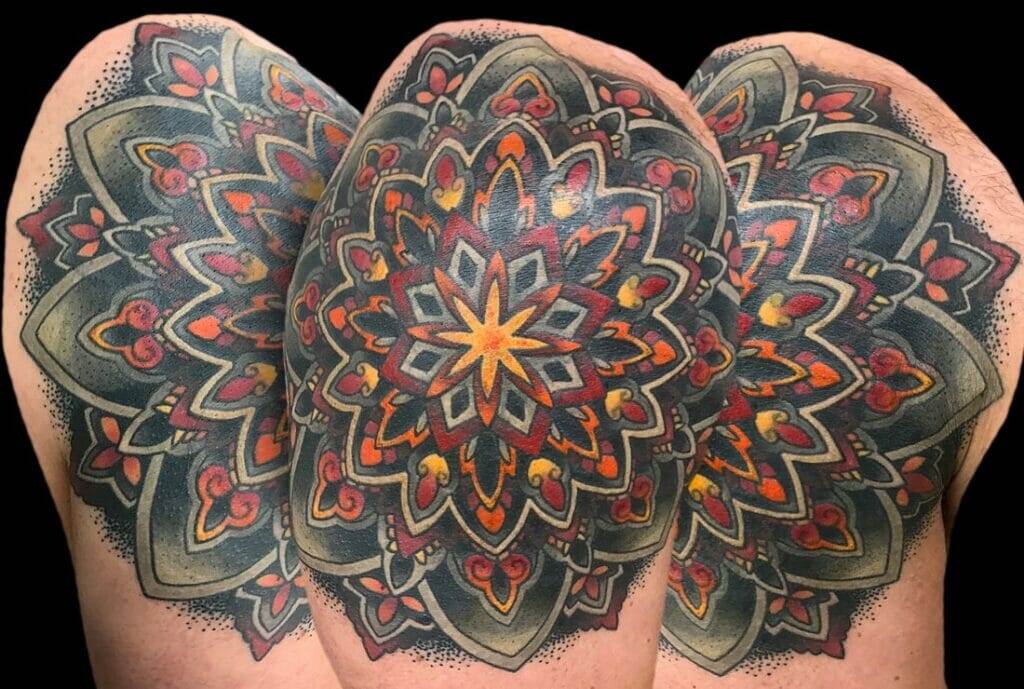
The Future of Tattoo Artistry: Trends and Innovations in the Industry
The world of tattoo artistry is constantly evolving, with new trends and innovations emerging in the industry. As technology advances, artists are able to push the boundaries of what is possible in tattoo design and technique.
One emerging trend in tattoo artistry is the use of augmented reality (AR) and virtual reality (VR) technology. These technologies allow artists to create interactive and immersive tattoo experiences for their clients. For example, an artist can use AR to overlay a digital image onto a client’s skin, allowing them to see how a tattoo will look before it is permanently inked.
Another trend is the rise of biomechanical tattoos, which combine elements of machinery, robotics, and organic forms. These tattoos create the illusion that the skin is being torn or peeled back to reveal mechanical parts underneath. Biomechanical tattoos require a high level of skill and creativity to bring the intricate details and realistic textures to life. Artists must carefully consider the placement and flow of the design to ensure it seamlessly integrates with the natural contours of the body. The combination of mechanical and organic elements in biomechanical tattoos allows individuals to express their fascination with technology and the blending of man-made and natural worlds. These tattoos often evoke a sense of awe and curiosity, as they challenge traditional notions of what is considered “natural” or “artificial.” As technology continues to advance, it is likely that biomechanical tattoos will continue to evolve, incorporating even more complex and futuristic elements.

